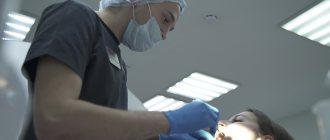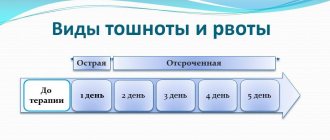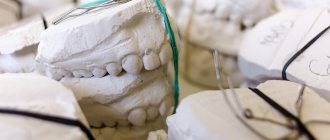|
|
Have you often had toothache? Probably every second person has encountered this problem at least once in their life. At such moments, he has only one desire - to get rid of her as quickly as possible. Various means are used, ranging from medications to traditional methods. After a few minutes, the pain goes away and the person feels much better. Often it is at this stage that his life-saving actions stop. Many people forget that pain is the first sign of the development of a pathological process in the oral cavity. Moreover, if it is accompanied by an increase in body temperature and swelling of the gums. All of these symptoms indicate a dental disease called periostitis or otherwise flux.
Anatomy of the lower leg
The leg and ankle are a complex mechanical structure, the correct operation of which ensures full motor activity of the whole organism. There are three bones in the ankle joint. Their interaction must be correct, in combination with the functions of connective tissue elements, ligaments, muscles and tendons.
The foot has 20 bones, 30 joints, 100 muscles, ligaments and tendons. Their work must happen correctly and harmoniously. When at least one function of the general mechanism is disrupted, certain pathological processes begin to develop. They are accompanied by pain in the lower legs.
The shin is the part of the lower limb that connects the knee to the heel. The tibia contains the tibia and fibula, to which the kneecap is attached. Near the heel, these two bones merge into the anterior and posterior malleolus. There are muscles throughout all parts of the lower leg. With their help, the foot bends, extends and rotates. In most cases, the appearance of pain in the lower leg is not associated with serious pathologies. However, the help of a doctor is mandatory.
Diagnostics.
Treatment of inflammation of the periosteum of the tooth is carried out in several stages; first you need to undergo a comprehensive examination by a dentist. It includes:
- Initial examination. The doctor will assess the condition of your oral cavity, interview you and give you a referral for tests and x-rays.
- Having received all the necessary data, the specialist must determine what kind of disease the patient has. Because signs of periostitis are similar in symptoms to such pathologies as: acute periodontitis, phlegmon and osteomyelitis. Also, at this stage it is important to establish the exact form of the flux in order to draw up a suitable treatment plan.
What structures can become inflamed in the lower leg?
Pain in the lower leg and ankle occurs suddenly after an injury - bruise, sprain, fracture, dislocation. It can also be caused by a chronic illness. The following structures can become inflamed in the lower leg:
- Ligaments. They may become inflamed or stretched. When a tendon or muscle is sprained, severe tension occurs. Severe trauma also causes muscle or tendon rupture.
- Joints. Arthritis or arthrosis is a common pathological condition that affects the joints and is accompanied by pain. Ankle pain also often accompanies the development of rheumatoid arthritis.
- Tendons. The most common inflammatory tendon pathology is tendonitis. Also, with constant friction of the tendons and a deficiency of interarticular fluid, bursitis develops. This is accompanied by irritation and discomfort.
- Bones. After an injury, the integrity of the bone is often compromised. This is a fracture or crack. In this case, it is very important to visit a doctor as soon as possible. Only through timely and correct treatment will the bone heal and there will be no consequences of the injury.
- Tarsal tunnel syndrome. It develops when the tarsal tunnel is not pinched. This is a nerve located along the entire length of the lower leg.
- Arch. There are tendons in the leg that work synchronously. This is how the arch is formed. When the tendons are connected correctly, a regular and symmetrical arch is formed. If they are connected asymmetrically, an arch of a small size is formed or it is completely absent. With this condition, discomfort or pain occurs.
- Connective tissue. Connective tissue elements are located on the bottom of the foot. When they become inflamed, it is called plantar fasciitis. This happens when wearing incorrectly selected shoes, too narrow and uncomfortable, or with poor posture.
Diagnostic measures
The doctor conducts an examination. It is not difficult to understand that a bone is damaged. This is indicated by external signs:
- redness of the gums;
- pain when pressing;
- the presence of a cushion containing pus;
- mobility of the incisor, canine, molar (noted if the disease is advanced).
To determine the stage of the disease and the depth of damage to bone formations, the doctor performs an X-ray or radiovisiography of the jaw.
Causes of shin pain
After physical effort or minor injury, the pain usually goes away on its own and does not require specialist intervention. If the pain does not go away within 2-3 days, you need to visit an orthopedist or traumatologist who will help establish a diagnosis and prescribe treatment.
One of the causes of pain is flat feet. With this pathology, the shape of the foot is flattened and irregular. Its functioning is impaired, and the shock-absorbing function of the foot is not fulfilled. As a result, muscles and ligaments experience additional stress, and fatigue appears after walking. In this case, you need to use orthopedic shoes or special insoles.
Varicose veins can cause discomfort in the lower leg. This disease is accompanied by stagnation of blood in the vessels. Its microcirculation is disrupted, the walls of blood vessels are greatly stretched. With venous stagnation, discomfort and pain occur.
To reduce the severity of discomfort, it is recommended to wear special compression products. Vein thrombosis and obliterating atherosclerosis are also diseases of the vascular system. Their development is accompanied by circulatory disorders, blood stagnation, and the formation of atherosclerotic plaques.
Other causes of pain in the lower leg include:
- decrease in the concentration of magnesium, calcium, potassium in the blood. Long-term use of diuretics can provoke such conditions;
- improper use of statins, a side effect is deformation of muscle tissue;
- spasms in muscle tissue after prolonged physical activity;
- ruptures or cracks in the tendons after an injury;
- broken bones, cracked joints;
- meniscal deformation, previous trauma;
- blockage of blood vessels;
- inflammatory process in tendons;
- atherosclerotic disease of the circulatory system with the formation of cholesterol plaques, deterioration of blood outflow;
- infectious processes in tissues;
- damage to nerve fibers, ruptures, sprains or trauma to fibers;
- severe injury or muscle strain, which is accompanied by the development of trap syndrome, compression of the lower leg;
- development of muscle contracture under severe tension or loads;
- inflammatory process in the periosteum of the tibia;
- tears of various types in the muscular system of the lower leg;
- tears of the popliteal ligaments;
- inflammatory process in the kneecap, in the tuberous surface;
- neoplasms of a benign or malignant nature in any part of the leg;
- the use of glucocorticosteroid drugs, in this case pain is a side effect;
- compression of muscle tissue or neurons in tissue.
People who smoke more than two packs of cigarettes a day often experience pain in the lower leg. After quitting the bad habit, the pain of smokers stops on its own. This may be a consequence of stress on the vascular system.
Fibrous periostitis
It develops gradually and is chronic. It occurs under the influence of irritations lasting for years and is manifested by a callous fibrous thickening of the periosteum, tightly fused to the bone. is observed on the tibia in cases of chronic leg ulcers, bone necrosis, chronic inflammation of the joints, etc. Significant development of fibrous tissue can lead to superficial bone destruction. In some cases, with a long duration of the process, new bone formation is observed. After eliminating the stimulus, a reverse development of the process is usually observed.
Treatment of lower leg pain due to various diseases
Depending on the established diagnosis, doctors draw up a treatment algorithm. Often, pain in the lower leg is caused by increased physical activity and prolonged walking. Therefore, in most cases, after rest, all unpleasant symptoms are eliminated.
To restore the full function of muscles, ligaments, tendons, you will need medication and physiotherapeutic treatment followed by recovery - massages, therapeutic exercises, manual therapy.
To reduce the load on the affected limb, it is necessary to wear special devices. To prevent foot pathologies, doctors prescribe orthopedic shoes or insoles. Doctors can also prescribe anti-inflammatory drugs, muscle relaxants, and chondroprotectors. In severe cases, surgical treatment may be necessary.
Prevention
Since periostitis is most often a consequence of advanced caries or injury, you need to be as careful as possible about the health of your teeth and gums. Prevention comes down to:
- hygiene in the morning and evening;
- rinsing the mouth after every meal;
- timely and competent treatment of emerging dental diseases;
- using dental floss on a regular basis;
- wearing protective mouthguards while engaging in traumatic sports;
- visiting the dentist once a year;
- annual professional hygiene in the dentist’s office.
If your tooth starts to hurt or your gums turn red, you should immediately make an appointment with a doctor. When an abscess forms, it is unacceptable to open it yourself. Such actions aggravate the course of the disease and lead to serious complications.
MBST therapy
With the help of magnetic radiation supplied by the MBST device, the following goals can be achieved:
- improve blood circulation and vascular condition;
- get rid of pain;
- prevent further development of the pathological process.
You can sign up for ankle treatment in Moscow at ArthroMedCenter. A completed course of MBST therapy is a good prevention of arthritis, arthrosis, atherosclerosis, and osteoporosis. After the procedure, blood circulation improves and the walls of blood vessels are strengthened. When undergoing MBST therapy, tissues begin to better absorb calcium, and damage and microcracks are restored faster.
Thanks to an integrated approach to treatment and prevention, you can get rid of unpleasant symptoms and prevent further development of diseases.
Classification
Dentists classify pathology into the following types:
- Simple. It is the result of bruises and injuries. The lesion is found in close proximity to mechanical action. A person complains of aching pain and swelling.
- Fibrous. A consequence of prolonged irritation of the periosteum, for example, as a result of necrosis. During palpation, a painful thickening of the bone is detected. If the necessary measures are not taken in time, the tumor can greatly increase in size and become malignant.
- Purulent. The result of an infection that penetrated from the outside after damage to the integrity of the mucosa. This form is often found with abscess, osteomyelitis, and phlegmon. Its causative agents are streptococci and staphylococci. Serous exudate is actively released from the abscess. An abscess occurs. Further, several options for the development of pathology are possible. The first is that pus destroys a separate area of the bone structure and breaks into the soft tissue. The second is that pus contributes to the exfoliation of a separate section of the periosteum. Then the bone stops receiving the necessary nutrition and dies. This type of inflammation always manifests itself clearly. The patient's body temperature rises. The cheek swells and an abscess forms in the mouth.
- Serous. May form after injury. A large amount of serous mucus is discharged. It accumulates. As a result, the periosteum may peel off and die.
- Ossifying. Bone tissue gradually grows. The problem occurs due to prolonged irritation of bone structures. For example, chronic osteomyelitis leads to it.
- Tuberculosis. This form is characterized by the formation of fistulas, inside which pus accumulates.
- Syphilitic. Found in patients with syphilis. The bones of the jaw and skull are affected. Pain is the main symptom. It intensifies at night. If fistulas form and break through, your health temporarily improves.
To understand how to treat pathology, it is important to determine what caused the abnormal process. That is why, before starting therapy, the dentist collects anamnesis and conducts diagnostics.
Symptoms
In acute cases of this disease, the following symptoms are observed:
- a sharp onset of clinical manifestations, within a few hours, but sometimes this stage lasts up to several days; in a short time, the sick person suddenly begins to feel unwell: lack of physical strength, high temperature, aches, the desire to eat disappears, sleep is disturbed;
- Severe pain increases in the area of the problematic tooth. It covers the entire jaw, extends to the temple, ear, neck, eye, then becomes aching;
- the facial bone swells, the contours of the face change, it becomes asymmetrical, the left and right parts differ in shape and size. local lymph nodes are painful and enlarged;
- hyperthermia and swelling of the mucous membrane around the causative tooth; Pus accumulates under the periosteum, and a ridge is visible. This is subperiosteal purulent inflammation;
- pus in the tooth cavity and its root canals - the pulp disintegrates;
- the tooth “does not knock” or knocks very weakly;
- The composition of the blood changes: leukocytes increase, the erythrocyte sedimentation rate accelerates.











